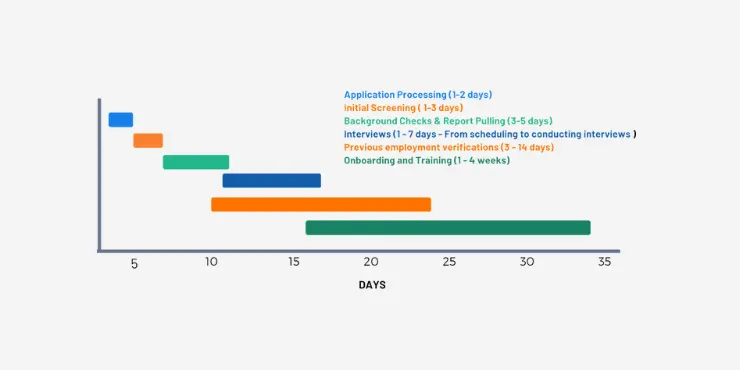Recruiting and retaining CDL-A drivers has become a growing challenge in the trucking industry. With rising turnover rates, many companies find themselves stuck in a costly cycle—constantly hiring, onboarding, and training drivers, only to see them leave for other opportunities. This cycle not only drains resources but also leads to trucks sitting idle, impacting profitability. To overcome these challenges, trucking companies need smarter recruitment strategies that focus not just on filling seats but on finding drivers who are a true fit for the business. Long-term retention must become the goal to reduce operational disruptions and improve efficiency.
When a truck is out of service due to a driver shortage, the losses can add up quickly. Each idle truck represents roughly $25,833 per month in lost revenue. Add to that the $9,000 it costs to recruit a new driver, and it becomes clear that frequent turnover is an expensive problem.
The financial impact is felt most acutely in fleets with high churn rates. Some companies report annual driver turnover rates of 90% or more, meaning they are constantly hiring just to maintain fleet capacity. By focusing on retention-first recruitment strategies, companies can reduce the need to repeatedly invest in new drivers and keep their trucks on the road.
Many companies turn to shared driver databases to fill open positions quickly, but these systems often come with hidden downsides. Drivers in these databases frequently receive multiple offers, creating a competitive frenzy that encourages job-hopping. Even drivers who have just started a new job may get lured away by the next offer, making it harder for carriers to build a stable workforce.
A more effective approach is to focus on direct leads—drivers who apply specifically to your company. These drivers tend to be more interested in what your fleet offers and are less likely to switch jobs at the first opportunity. With direct leads, companies can better assess whether a driver’s values and goals align with their operations, improving the chances of long-term retention.

Effective recruitment is more than just filling vacancies—it’s about ensuring that each new hire is a good fit for both the role and the company culture. Clear communication and setting realistic expectations from the beginning are key to building trust with drivers. When drivers understand what the job entails, they are more likely to feel satisfied and engaged, which reduces the risk of early turnover. To attract the right candidates, companies can emphasize what makes them unique. This might include highlighting:
Drivers today are looking for more than just a paycheck—they want a role that aligns with their personal values and provides opportunities for growth.
Offering incentives that go beyond sign-on bonuses can be a game-changer in driver retention. While sign-on bonuses are effective at attracting attention, they don’t always foster long-term commitment. Instead, companies are finding success with
Adjusting recruiter incentives to reward retention milestones—such as drivers staying beyond 90 days—can also shift the focus from quick hires to quality ones. When recruiters concentrate on finding the right fit instead of just filling seats, companies build a more stable and engaged workforce.
Moving away from traditional recruitment methods, like shared databases, allows companies to explore more personalized recruitment strategies. Here are a few approaches that have proven effective:
These personalized strategies not only attract higher-quality candidates but also improve retention by connecting companies with drivers who are a good cultural fit from the start.
Technology is playing an increasingly important role in driver recruitment. Data-driven insights help companies target the right drivers and track the effectiveness of their campaigns. Automated tools can also simplify compliance management, freeing up recruiters to focus on building relationships with drivers.
By using targeted advertising and social media campaigns, companies can ensure their recruitment efforts reach the right candidates at the right time. Tracking key metrics, such as retention rates and cost-per-hire, allows companies to continuously improve their strategies and focus on what works.
A retention-first recruitment strategy benefits everyone. Drivers who feel connected to their employer are more likely to stay, reducing the need for constant hiring and onboarding. This stability allows companies to focus more on operations and growth, rather than dealing with frequent turnover.
The high costs of recruiting and turnover make it essential for trucking companies to rethink their hiring strategies. Focusing on quality recruitment and retention from the outset ensures fleets remain operational and profitable, without the constant need to hire replacements.

Whether through direct CDL-A driver leads, digital advertising, or personalized outreach, companies can significantly improve their operations with the right strategy. Truckers Flow’s expertise in this area helps carriers build stable fleets by connecting them with motivated drivers who want to stay for the long haul.